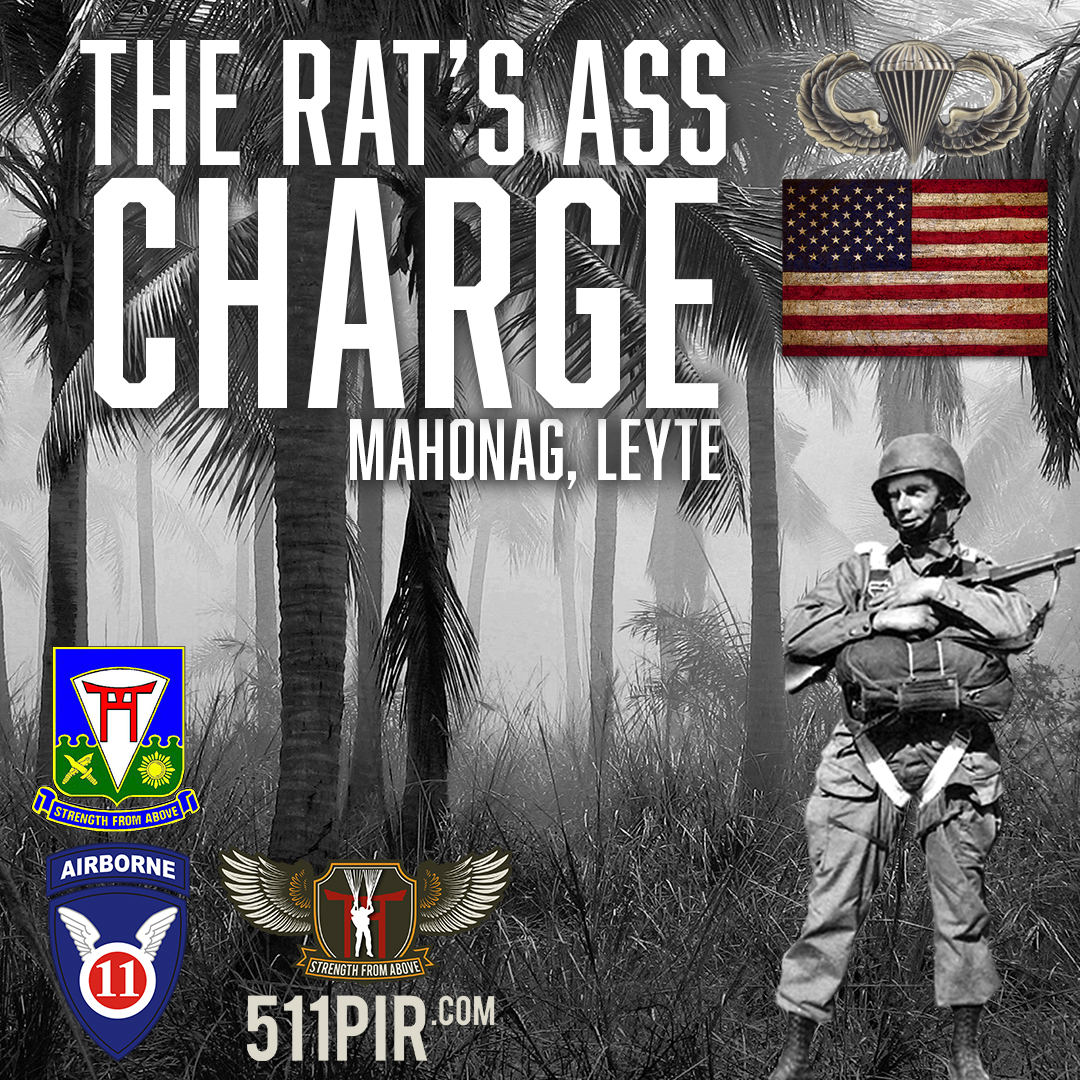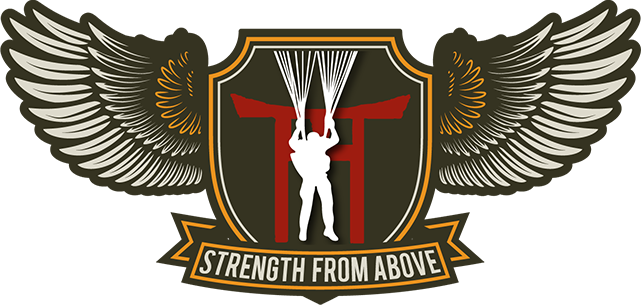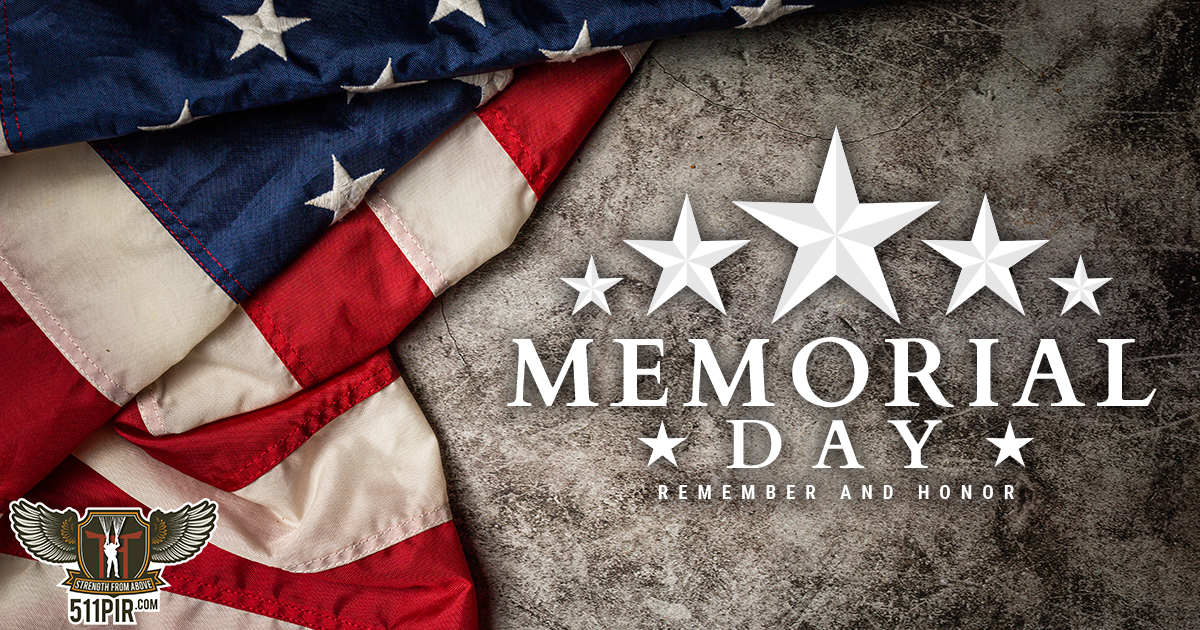The Rat's Ass Charge is the story of one of those incredible engagements from World War II, one effected by a small, understrength and under-supported parachute companies, that equals anything that has been written about the incredible exploits of the 101st and 82nd Airborne Divisions in Europe.
That is not said to in any way to diminish what the Screaming Eagles and the All-Americans did "over there." Rather, it is only to point out that the 11th Airborne Division is equally deserving of attention, researching, illumination and praise. This is only a small piece of their story.
 On Thanksgiving Day, 1944, after a breakfast of cold turkey and rain-soaked potatoes and fruit salad, the 511th Parachute Infantry Regiment led the 11th Airborne Division's push westward into the jungles and mountains of Leyte in the Pacific Theater. Over the next 30+ days, the young paratroopers of the 511th PIR would endure the harshest of conditions including hunger, thirst, cold, monsoon rains, Banzai assaults, tropical diseases, blood and death. Many companies went over five days (one up to ten) without resupply and rations and as D Company's 1LT Andrew Carrico later noted, resorted to eating "anything we could find: dogs, roots, potatoes. When you’re hungry you’ll eat anything. Hunger was a constant gnaw in our stomachs."
On Thanksgiving Day, 1944, after a breakfast of cold turkey and rain-soaked potatoes and fruit salad, the 511th Parachute Infantry Regiment led the 11th Airborne Division's push westward into the jungles and mountains of Leyte in the Pacific Theater. Over the next 30+ days, the young paratroopers of the 511th PIR would endure the harshest of conditions including hunger, thirst, cold, monsoon rains, Banzai assaults, tropical diseases, blood and death. Many companies went over five days (one up to ten) without resupply and rations and as D Company's 1LT Andrew Carrico later noted, resorted to eating "anything we could find: dogs, roots, potatoes. When you’re hungry you’ll eat anything. Hunger was a constant gnaw in our stomachs."
Division commander MG Joseph May Swing would later tell his father-in-law Peyton C. March that by mid-campaign, "We’ve killed over 2000 Japanese…” in what Swing called “a process of extermination...Casualties on our side are not light..."
Not light indeed; the 511th PIR was down to just 60% strength, having suffered over 400 casualties in roughly three weeks, roughly 75% of the Division’s losses, while eliminating 5,760 soldiers of Japan’s 26th and 16th Infantry Divisions. When they marched down to Ormoc Bay on Leyte's western coast on Christmas Day, Captain Stephen Edward Cavanaugh explained, "We came out on the other side of the island a pretty well decimated regiment." Cavanaugh's D Company left Leyte's Bito Beach on November 23 with 117 men; twenty-one of their comrades now lay dead in the mountains or were being carried out on poncho stretchers.
The photo to the right is of the 511th PIR's cemetery on what they called Rock Hill because "he was there," he being their regimental commander Colonel Orin D. "Hard Rock" Haugen who was right up front with them. After fighting by their side through several engagements, Colonel Haugen had gained a reputation as a serious fighter.
All of his paratroopers had, actually. Sixth Army's Lieutenant General Walter C. Krueger called Hard Rock's unit, "the God-damned fightingest outfit I have ever seen!"
But by December 21, 1944, that "fightingest outfit" was still miles away from the beaches of Ormoc Bay with a stubborn line of enemy defenses standing in their way. COL Haugen, fresh from a late meeting with MG Swing, decided an early attack would be the most effective means of eliminating Hacksaw Ridge’s last defenders, and for good reason. As D Company's 1LT Carrico explained, "The Japanese were famous for sleeping late."
Hard Rock also told his men to shave and clean up since MG Swing would soon come through with the 187th Glider Infantry Regiment, which led D Company's S/Sgt. Wilbur Wilcox, Wilbur to declare, "Scraping a month’s growth of beard off was agony!"

